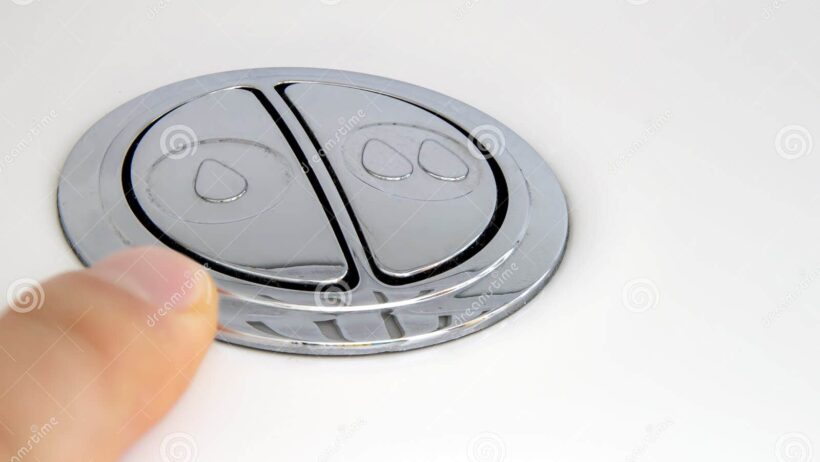In the intricate dance of domestic sustainability, low flow toilets emerge as silent sentinels, championing both water conservation and energy efficiency. Like the subtle whispers of nature, these fixtures operate with precision, drawing upon cutting-edge design principles to reduce the volume of water per flush while maintaining the utmost performance. But how do they achieve this remarkable feat? Understanding the mechanics and implications of low flow toilets unveils a larger narrative on conservation, prompting us to rethink our approach to resource usage at home.
To begin with, it is imperative to dissect what constitutes a low flow toilet. Traditional toilets operate with a hefty flush volume, often around 3.5 to 7 gallons per flush (gpf). In stark contrast, low flow toilets utilize a mere 1.28 gpf or less—an astounding reduction that reverberates down to the water supply systems. This transformative leap not only curtails water consumption but also helps mitigate the burgeoning pressure on wastewater treatment facilities. Thus, the low flow toilet can be likened to a savvy investor: it spends less water on flushing while still ensuring that the investments it does make yield satisfactory returns.
The mechanism through which low flow toilets achieve their efficiency is grounded in innovative engineering and design. They employ a combination of gravity-assisted flush systems and pressure-assisted technology that utilizes air pressure to expel waste efficiently and effectively. The design considerations are akin to optimizing an intricate machine, where every component is calibrated to maximize efficacy with minimal waste. In essence, low flow toilets exemplify the principle of wise stewardship, taking just what is necessary to achieve function while leaving ample resources for posterity.
Equally interesting is the relationship between water conservation and energy savings. Each flush of a traditional toilet not only consumes water but also the energy needed to heat, pump, and treat that water. By reducing water use, low flow toilets indirectly lead to a decrease in energy expenditure. The less water that is drawn from municipal supplies, the less energy is required to process it. Thus, the act of installing a low flow toilet becomes an emblematic choice for eco-conscious homeowners aiming to lessen their carbon footprint.
This concept can be illustrated through a simple metaphor: consider the contrast between a vast river flowing unchecked and a gently meandering stream that harmonizes with its surroundings. Just as the river engulfs surrounding flora with excess, leading to wasteful flooding, traditional toilets consume resources in profusion, often resulting in uneconomic practices. The stream, however, signifies efficiency, where every drop is used judiciously, ensuring that life flourishes without excess. This careful balance is what low flow toilets strive to achieve in the realm of modern plumbing.
Moreover, low flow toilets align seamlessly with broader environmental initiatives at both local and global scales. Water scarcity remains a pressing global issue; the United Nations predicts that by 2025, a staggering 1.8 billion people will live in regions plagued by absolute water scarcity. By reducing household water usage, low flow toilets become agents of change, heroes in the fight against depletion. Each toilet installation represents an individual contribution to a collective goal, embodying the ethos of responsible resource stewardship.
The allure of low flow toilets extends beyond their ecological merits—they offer financial savings too. The average household can reclaim significant savings on its water bills, allowing for more purposeful allocation of funds. The initial investment in a low flow toilet is often offset by long-term savings, presenting a pragmatic solution for families that seek to balance sustainability with economic sensibility. This amalgamation of ecological and fiscal responsibility showcases the appeal of these toilets as more than just bathroom fixtures; they are transformative investments in both home and planet.
Transitioning to a home outfitted with low flow toilets is accompanied by a need to address common misconceptions. Critics often question their performance, fearing they may lack the flushing power of their traditional counterparts. However, advancements in technology have dispelled these doubts. Modern low flow toilets utilize efficient flushing mechanisms that ensure waste is removed without fail. The myth persists primarily due to lingering perceptions rather than reality. Homeowners should be emboldened to embrace low flow toilets, bridging the gap between perception and fact.
In the grander scope, the introduction of low flow toilets is but one facet of a comprehensive approach to home efficiency. Complementing them with water-efficient appliances and sustainable landscaping creates an ecosystem where water conservation thrives. An interconnected web of mindful choices amplifies individual efforts, proving that small actions, when multiplied across millions of households, can culminate in significant advancements toward a sustainable future.
As we gaze forward into the tempest of climate challenges, embracing innovations like low flow toilets becomes integral to a holistic response to sustainability. These plumbing marvels extend beyond the mundane necessity of waste management; they hold the potential for guiding us toward a future where resource conservation intertwines with everyday life. Much like the pulse of a thriving ecosystem, each low flow toilet embodies a principle of reciprocity—a commitment to not just taking from the earth, but also giving back.
In conclusion, low flow toilets are much more than mere conveniences. They represent a conscious choice toward harmony with our environment, integrating energy conservation with water savings in a seamless embrace of innovation and responsibility. The eco-champion stands quietly in many homes, reminding us that it is not the volume of what we consume, but the wisdom with which we manage our resources that defines our impact. So, let us celebrate these humble yet profound fixtures for their role in steering humanity toward a more sustainable and energy-conscious future.








